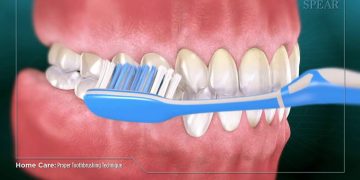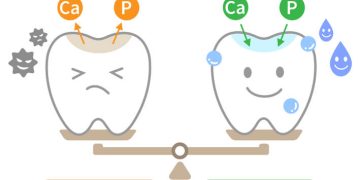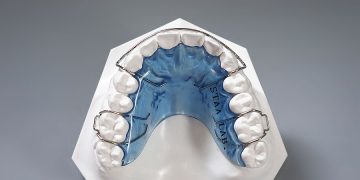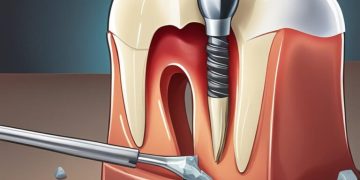Introduction
Cosmetic dentistry has rapidly evolved in recent years, offering a variety of procedures designed to enhance the appearance of a person’s smile. From teeth whitening to veneers, dental implants, and orthodontic treatments, these procedures have transformed the field of dentistry, allowing patients to achieve a flawless smile that boosts their confidence and self-esteem. However, one of the most common questions people have when considering cosmetic dental procedures is: How long do the results last?
The longevity of cosmetic dental treatments can vary significantly depending on the type of procedure, the individual’s oral hygiene, lifestyle choices, and overall health. While some treatments offer permanent or long-lasting results, others require maintenance or periodic touch-ups. Understanding the factors that influence the durability of cosmetic dental procedures is essential for individuals considering these treatments.
In this essay, we will explore various cosmetic dental procedures, the factors that affect their longevity, and how patients can extend the life of their results. We will cover popular cosmetic treatments such as teeth whitening, dental veneers, dental implants, crowns, and orthodontic procedures to understand how long the results of each typically last.
Section 1: Teeth Whitening – How Long Do the Results Last?
Overview of Teeth Whitening Procedures
- In-Office Teeth Whitening: A professional whitening procedure performed at the dentist’s office using high-concentration bleaching agents. Results are immediate and typically more dramatic.
- At-Home Whitening Kits: Custom trays and whitening gels prescribed by a dentist for use at home, offering a less concentrated solution and slower results.
- Over-the-Counter Whitening Products: Whitening toothpaste, strips, and gels available in drugstores.
Factors Affecting the Duration of Whitening Results
- Dietary Habits: Certain foods and drinks, like coffee, wine, berries, and tobacco, can stain teeth and reduce the longevity of whitening results.
- Oral Hygiene: Regular brushing, flossing, and use of mouthwash help maintain results. Inconsistent oral hygiene can lead to the gradual return of discoloration.
- Type of Treatment: In-office whitening results generally last longer compared to at-home or over-the-counter products due to the higher concentration of whitening agents used.
How Long Can Teeth Whitening Results Last?
- In-Office Whitening: Typically, results can last anywhere from 1 to 3 years, depending on oral care habits and lifestyle factors.
- At-Home Whitening: Results usually last 6 months to a year before touch-ups are required.
- Over-the-Counter Whitening: Results can last for a few months but are generally less durable than professional treatments.
Maintaining Results
- Lifestyle Changes: Reducing consumption of stain-causing substances and quitting smoking can significantly extend the results of teeth whitening.
- Touch-Ups: Many patients opt for touch-up treatments every 6 to 12 months to maintain the whiteness of their teeth.
Section 2: Dental Veneers – How Long Do They Last?
What Are Dental Veneers?
- Overview: Thin shells of porcelain or composite resin that cover the front surface of teeth to improve their appearance. Veneers are commonly used to correct issues like discoloration, chips, cracks, misalignment, and gaps.
Factors Influencing Veneer Longevity
- Material Choice: Porcelain veneers tend to last longer than composite resin veneers. Porcelain is highly durable, resistant to stains, and offers a more natural appearance.
- Oral Habits: Habits such as teeth grinding, biting on hard objects, and poor oral hygiene can reduce the lifespan of veneers.
- Maintenance: Regular dental checkups, professional cleaning, and avoiding excessive force on the veneers can help them last longer.
How Long Do Dental Veneers Last?
- Porcelain Veneers: Typically last between 10 to 15 years, and in some cases, they can last even longer with proper care.
- Composite Resin Veneers: Typically last around 5 to 7 years, though they can be less durable than porcelain and may require more frequent replacements or repairs.
Caring for Your Veneers
- Proper Oral Hygiene: Brushing and flossing carefully around the veneers to prevent plaque buildup and gum disease.
- Avoiding Staining Substances: Limiting the consumption of staining foods and beverages can help maintain the veneer’s appearance.
- Night Guards: Wearing a nightguard if you grind your teeth can protect your veneers from unnecessary wear and damage.

Section 3: Dental Implants – How Long Do They Last?
What Are Dental Implants?
- Overview: Dental implants are titanium posts surgically placed into the jawbone to replace missing teeth. After placement, a crown is attached to the implant, restoring both function and aesthetics to the mouth.
Factors Influencing Implant Longevity
- Bone Health: The condition of the jawbone is critical for the success of dental implants. Bone loss or insufficient bone density may affect the implant’s ability to integrate properly.
- Implant Material: Titanium is the most commonly used material for dental implants due to its strength, biocompatibility, and ability to fuse with the bone.
- Oral Hygiene: Good oral hygiene practices, such as regular brushing and flossing around the implant, are essential for preventing gum disease and ensuring the implant’s longevity.
How Long Do Dental Implants Last?
- Implant Longevity: Dental implants can last a lifetime if well-maintained. The titanium post may not require replacement, but the crown or restoration on top might need to be replaced every 10 to 15 years due to wear.
- Average Lifespan: On average, dental implants last about 25 years or longer with proper care. Some implants may last indefinitely if maintained well.
Maintaining Dental Implants
- Regular Dental Checkups: Annual checkups to monitor the health of the implant and surrounding tissues.
- Good Oral Hygiene: Brushing and flossing around the implant is crucial to prevent plaque buildup, which can lead to implant failure.
- Avoiding Excessive Force: Avoiding habits like grinding teeth or chewing on hard objects can prevent damage to the implant and crown.
Section 4: Dental Crowns – How Long Do They Last?
What Are Dental Crowns?
- Overview: Dental crowns are tooth-shaped caps placed over damaged or decayed teeth to restore their shape, size, and strength. Crowns can be made from various materials, including porcelain, ceramic, metal, or a combination.
Factors Affecting Crown Longevity
- Material: Porcelain and ceramic crowns are aesthetically pleasing but may wear out faster than metal crowns, especially on back teeth where there’s more chewing pressure.
- Placement Location: Crowns placed on molars endure more wear and tear compared to those placed on front teeth.
- Oral Care: Regular brushing, flossing, and dental checkups help extend the life of crowns.
How Long Do Dental Crowns Last?
- Porcelain and Ceramic Crowns: Typically last between 10 to 15 years, although they may need replacement sooner if subjected to heavy wear or trauma.
- Metal Crowns: Can last 15 to 20 years or longer, as they are more durable and resistant to wear.
- Average Lifespan: Most crowns last between 10 to 15 years on average, though some may need to be replaced sooner, depending on individual factors.
Maintaining the Longevity of Crowns
- Good Oral Hygiene: Proper brushing and flossing are essential for preventing plaque buildup around the crown.
- Regular Checkups: Regular visits to the dentist can help identify any early signs of crown damage or decay underneath.
- Avoiding Hard Foods: Avoid chewing on ice, hard candy, or other hard substances that could damage the crown.
Section 5: Orthodontics – How Long Do Results Last?
Overview of Orthodontic Procedures
- Traditional Braces: Metal brackets and wires that slowly shift teeth into proper alignment over time.
- Clear Aligners: Transparent trays (e.g., Invisalign) that gradually align teeth through a series of custom-made aligners.
Factors Influencing the Duration of Results
- Patient Compliance: Wearing the aligners as instructed, attending follow-up appointments, and maintaining oral hygiene can significantly affect the results.
- Age of the Patient: Younger patients may experience faster results, while adults may require more time for adjustments.
- Post-Treatment Retainers: Retainers are often required after treatment to maintain teeth alignment and prevent relapse.
How Long Do Orthodontic Results Last?
- Traditional Braces: Results are permanent once the treatment is complete, but retention is necessary to prevent teeth from shifting back.
- Clear Aligners: Similar to traditional braces, the results are long-lasting but require retention devices to maintain the teeth’s new position.
- Retainers: After the removal of braces or aligners, wearing a retainer is essential for preventing teeth from shifting back into their original positions.
Conclusion
Cosmetic dental procedures offer transformative benefits, enhancing both the appearance and function of the teeth. The longevity of these results can vary depending on the procedure, the materials used, and the patient’s oral care habits. Procedures like dental implants, veneers, crowns, and orthodontics can provide long-lasting or permanent results if maintained properly. However, treatments like teeth whitening may require periodic touch-ups to maintain their effects.
By understanding the factors that influence the lifespan of cosmetic dental procedures and following proper care recommendations, individuals can ensure that their investment in a beautiful smile lasts for many years to come. Regular dental visits, good oral hygiene, and making mindful lifestyle choices all play a crucial role in extending the results and keeping the smile looking its best.













































Discussion about this post